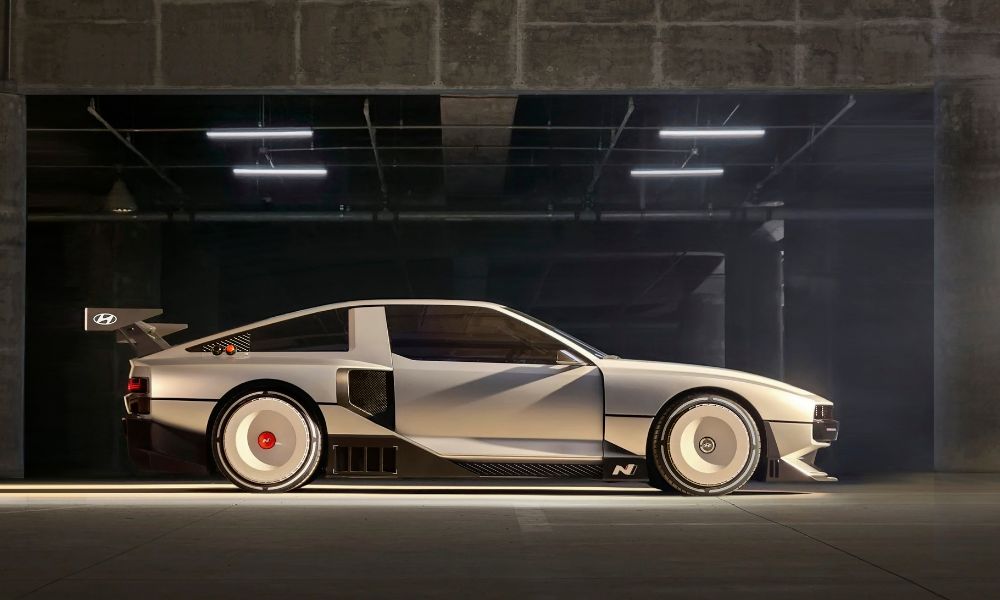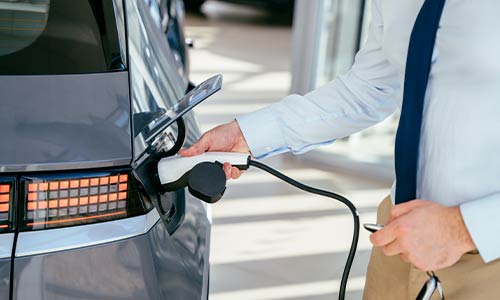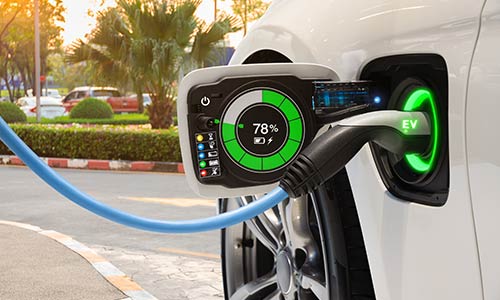
Types of electric cars
Last updated June 15, 2023
Recent electric car industry statistics show that sales for electric vehicles (EVs) are growing at a rapid pace. The Society of Motor Manufacturers and Traders (SMMT) has predicted that almost 500,000 new hybrid and fully-electric cars will hit UK roads in 2023.
Key factors driving consumers to sell their car and make the switch to an electric model include:
- The impending 2030 ICE ban (which will prohibit the sale of new petrol and diesel cars).
- Low EV charge costs and increased EV charge point availability.
- Longer range electric cars (which also help to quell range anxiety).
- More EV drivers are choosing to upgrade and sell electric cars, which has led to greater availability and lower prices for used electric models.
Many automotive experts and consumers would agree there’s never been a better time to buy or sell an electric car. However, if you are thinking about making the switch to an EV, you should take a little time to familiarise yourself with the various electric car types on the market.
In this guide, we’ll list all the currently available EV types. We’ll also explain their features, advantages and disadvantages to help you make an informed decision on which type is best for you.
Value your car in under 30 seconds
Different types of electric vehicles
- Electric vehicles (EVs) or battery electric vehicles (BEVs).
- Hybrid electric vehicles (HEVs).
- Plug-in hybrid electric vehicles (PHEVs).
- Mild hybrid electric vehicles (MHEVs).
- Range-extended electric vehicles (RE-EVs).
- Fuel cell electric vehicles (FCEVs).
Electric vehicles (EVs)/Battery electric vehicles (BEVs)
The terms ‘electric vehicle’ (EV) and ‘battery electric vehicle’ (BEV) are used interchangeably to describe a fully electric car that is powered solely by a large capacity battery (as opposed to a traditional petrol or diesel engine).
EVs use electric motors for propulsion, whilst the battery provides all the power needed for the vehicle to work. Most standard EV models are sold with their own three-point charger for convenient electric car charging at home.
As of April 2023, there were 42,566 publicly available EV charge points in the UK (an increase of 37% since April 2022). However, the UK Government is aiming to increase this number to 300,000 by 2030.
Public charge points allow EV drivers to top up their battery away from home – and improved EV charge point availability will play a crucial role in the electrification of UK vehicles.
Advantages
- Electricity is cheaper than petrol and diesel.
- Low maintenance costs.
- Relatively wide availability.
- Easy home charging.
- EVs produce zero emissions.
- EVs are exempt from road tax.
- EV depreciation rates are usually lower than other car types.
- Government electric car grants are available to help buyers save on the cost of an EV.
Disadvantages
- A full charge may take around 8 hours.
- EVs are usually priced higher than equivalent petrol, diesel or hybrid models.
- EVs can be expensive to insure.

Hybrid electric vehicles (HEVs)
A hybrid electric vehicle (HEV) features a rechargeable battery and a small electric motor, which are used to assist a petrol or diesel engine.
HEV models offer many of the benefits found in both electric and traditionally fuelled vehicles. Therefore, they are a great choice for those who don’t wish to fully rely on electric power but still want to reduce their emissions.
The electric mode on a HEV is intended for driving short distances at controlled speeds, whilst longer journeys (or those requiring heavier acceleration) tend to take advantage of the engine. HEVs are great for city drivers (and those who rarely drive long distances), as they would frequently benefit from a HEV’s electric mode.
Advantages
- Usually cheaper to buy than fully electric models.
- Ideal for drivers looking to lower emissions.
- Generally cheaper to run than petrol or diesel vehicles.
Disadvantages
- Fuel economy varies depending on driving conditions.
- Electric range is limited.
- Minimal tax benefits compared to fully-electric models.
- Hybrid congestion charge exemption no longer applies in London.
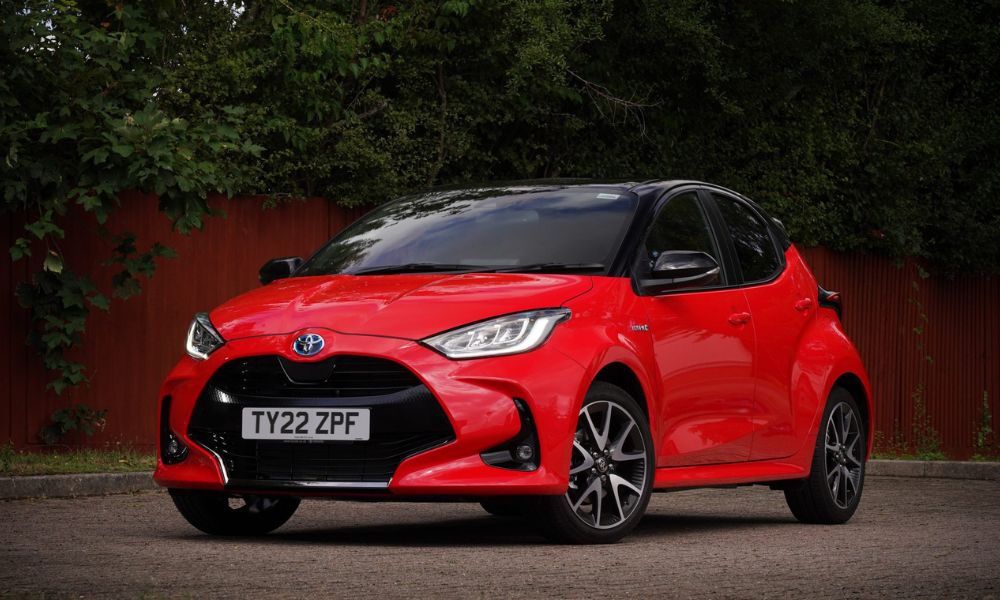
Plug-in hybrid electric vehicles (PHEVs)
A plug-in hybrid electric vehicle (PHEV) is similar to a HEV but features a larger electric battery (providing a longer electric range). PHEVs, like regular EVs can be easily and conveniently charged at home or public charging points.
Most PHEVs can cover between 20 and 70 miles in electric mode. Therefore, a plug-in hybrid is the perfect choice for drivers who are looking to lower emissions but are put off from fully electric vehicles due to range anxiety.
Advantages
- Usually more affordable than fully-electric vehicles.
- Longer range than HEVs.
- Not 100% reliant on battery range (the petrol or diesel engine is a reliable back-up option).
Disadvantages
- You’ll need to keep both the battery and fuel tank topped up.
- PHEVs are more expensive to buy than fully petrol or diesel-powered vehicles.3
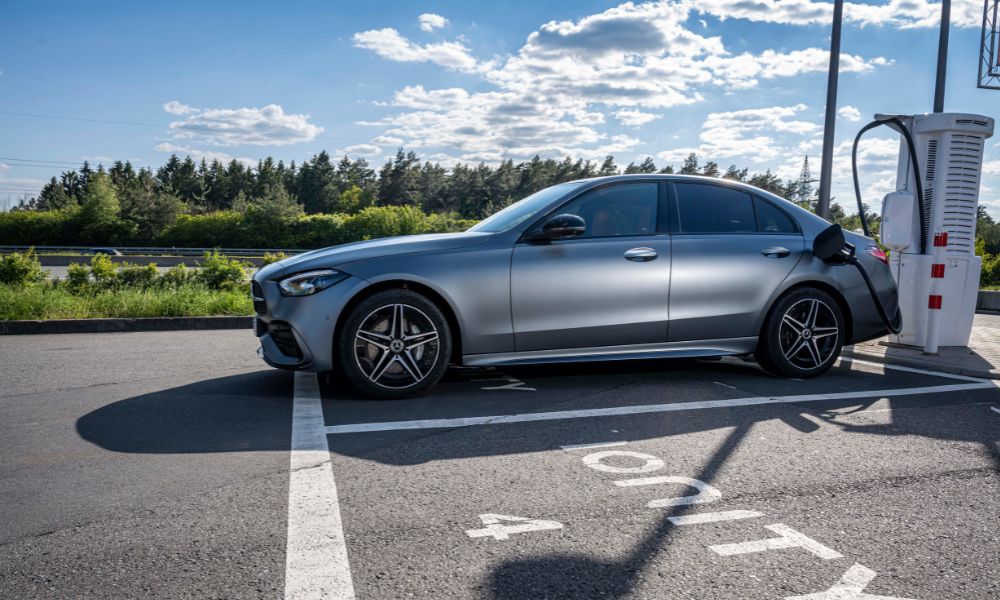
Mild hybrid electric vehicles (MHEVs)
Mild hybrid electric vehicles (MHEVs) feature a very small electric battery that provides additional power to a traditional petrol or diesel engine. The electric battery and motor are used to aid acceleration, as they allow the engine to be shut off automatically while the car is coasting (which helps to improve fuel economy).
Due to their reliance on a petrol or diesel engine, MHEVs are not considered electric or low-emission vehicles – but rather petrol or diesel cars with electrified features to improve economy.
Advantages
- Prevent excess fuel consumption whilst coasting.
- MHEV’s stop-start technology is often superior to those found in combustion engine cars.
Disadvantages
- MHEVs are not considered low emission vehicles.
- No electric driving mode.
- Reliant on petrol or diesel engines.

Range-extended electric vehicles (RE-EVs)
A range-extended electric vehicle (RE-EV) is essentially the reverse of a mild-hybrid vehicle (MHEV). Although RE-EVs are widely classed as electric vehicles, they include a small diesel or petrol engine which can be used as a generator (and helps to charge its batteries).
The internal combustion engine only ever kicks in to increase range. So, if you’re worried about relying on the range of an all-electric vehicle, an RE-EV may be a better option.
Advantages
- Classed an EV (electric vehicle).
- Uses a petrol or diesel engine as back-up power, offering increased range.
- Lower emissions than PHEV, HEV, MHEV, petrol and diesel vehicles.
Disadvantages
- A RE-EV is often more expensive than a comparable fully electric model.
- More difficult to maintain and repair than a fully electric, traditional hybrid or combustion engine car.
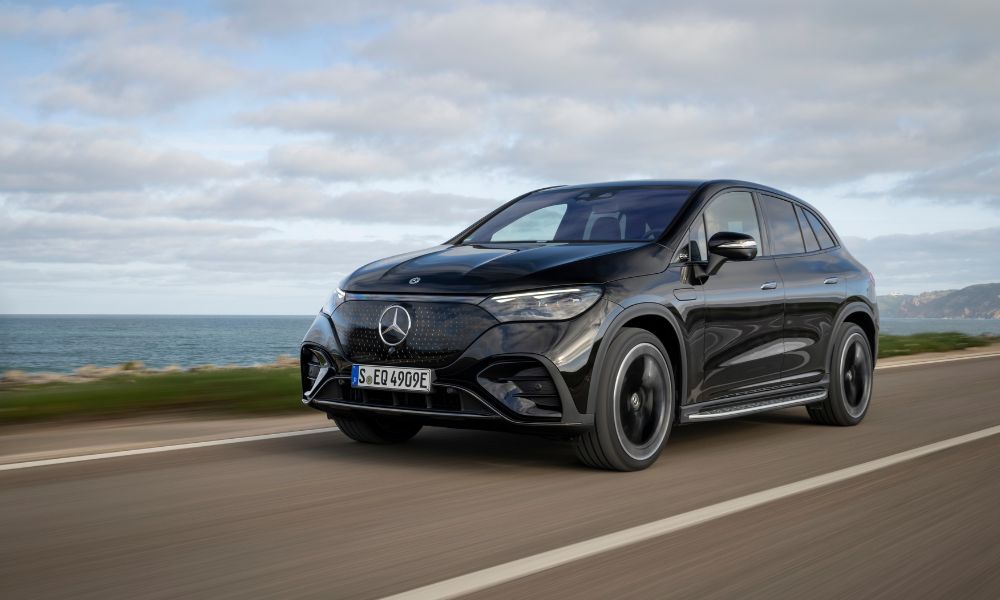
Fuel cell electric vehicles (FCEVs)
A fuel cell electric vehicle (FCEV) is powered by hydrogen. It converts hydrogen into electricity, which powers the electric motor.
These vehicles are particularly eco-friendly, as they only emit water vapour. FCEVs are a fairly new innovation (and therefore are not as widely available as other EV types).
As of June 2023, there are only 14 public hydrogen stations in the UK. However, availability is likely to increase if FCEVs prove to be a viable alternative to traditionally fuelled cars.
Advantages
- Only emit water vapour while driving.
- Range of up to 400 miles.
Disadvantages
- Very limited hydrogen station availability.
- Expensive price tag compared to other electric and traditionally fuelled models.
- Difficult to repair and maintain as FCEV technology is very new.
